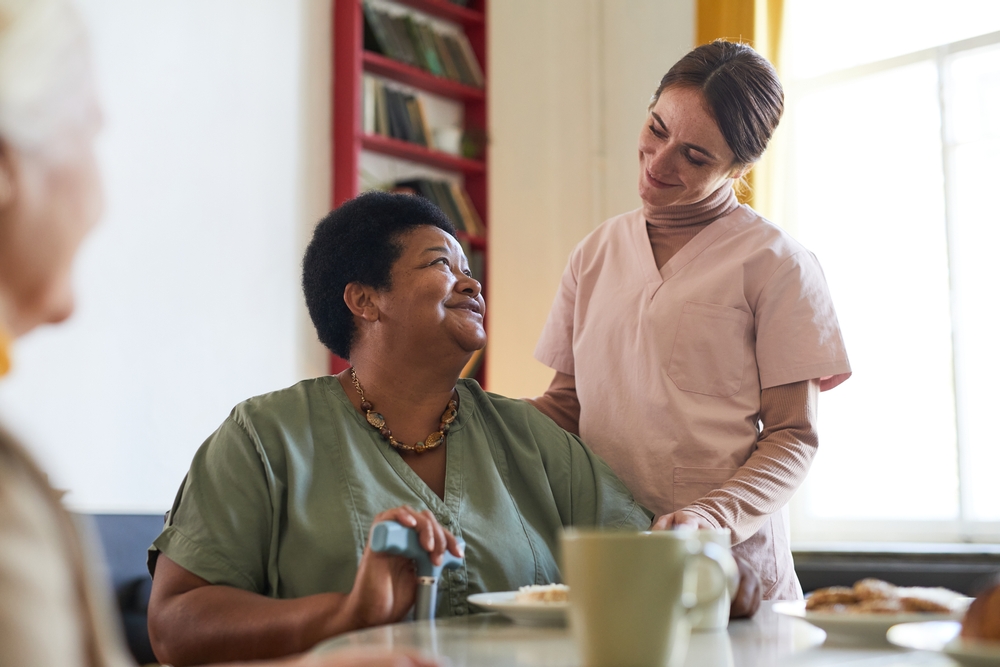Everyone has heard this: There is so much food, in fact tons of it, wasted. Every day. In 2010, according to the US Department of Agriculture, an estimated 30% to 40% of the food supply, or approximately 133 billion pounds of food, was wasted, with a price tag of $161 billion. This unmitigated food waste and all the resources that go along with its production and disposal are all too apparent in the hospitality and hospital industries. I can’t imagine how huge a billion pounds is, but I can assuredly say that three times a day, in every hospital, incalculable amounts of uneaten food, unopened sugar, milk, supplemental drinks, and many, many other items meant for the patient’s gut end up in the bowels of the hospital’s disposal system instead. It’s ironic that so much food is wasted in a place where most of its denizens can undoubtedly benefit from nourishment, both the physical and the spiritual kind. Come to think of it, if food is medicine, then, wasted food is wasted medicine.
Lip service, not enough bite
Nutrition is part of the health professions curriculum. Nursing students and staff can articulate the role of good nutrition in the speedy recovery of patients, but implementation of best practices is found wanting. As a nurse during the AIDS epidemic, I saw first-hand the refusal of some food delivery personnel to bring the food tray to the bedside of a patient known to have AIDS. At meal times, untouched trays sat on the corridor floor outside closed doors. Now and then, a nurse or an aide would bring the tray inside, where it sat further untouched because the patient was too weak to feed themselves. I don’t know why, but what stands out in my memory is the sight of a melted cup of ice cream with a plastic spoon sticking out like an accusatory finger—a silent rebuke aimed at the staff’s failure to feed the patient. I wonder if during the height of the COVID-19 pandemic similar sights were seen? It’s hard to imagine feeding someone wearing a mask, 6 feet apart.
For want of a dining companion
Hospital food has a reputation for being bland or outright uneatable, unless one is admitted to the concierge unit and pays a premium. In these units, it might be possible to pair your cardiac diet with wine (can you imagine?). For the rest of us, there’s Sanka and Shasta. But even in the VIP unit, food waste abounds. The jug of water infused with organic blood orange and cucumber drips its icy sweat hoping to be enjoyed by the patient, but alas it’s beyond their physical reach, so it’s taken away at the end of the day, tepid and unused.
Hunger alone won’t make people eat. Flavor helps, but only so much. One of the missing links in enhancing hospital nutrition (and consequently the patient experience) is wholesome companionship at meal time. Humans eat more and enjoy their meals more when they’re in good company. Look into any restaurant, it’s rare to see solitary diners. The chatter between chewing is an appetizing soundtrack in living a social life. Look into a hospital room during meal times and you might find a sad scene: a frail uncompanioned patient struggling to open the package of limp plastic utensils with their trembling hands, while the so-called vegetable soup leaves a muck of grease on a styrofoam cup. One thing that puzzles me is that in restaurants, the server descends upon the customer every 10 minutes or so, asking if everything is okay. Every time I dine out, I feel like an ICU patient being frequently checked. Have you ever seen the socially isolated patient being checked on by the staff frequently, during or outside of mealtimes, inquiring, “Can I get you anything else?” Wouldn’t it be great if the staff did just that?
A couple of years ago, I visited a friend of mine who was in subacute rehab. I timed my visits during dinner (yes, at 5 pm!). On many occasions, I would find my friend in mute company with two to three other residents, all barely touching their food. My intrusion made us a quartet. As I prodded and cajoled my friend to eat some more, the other residents would re-start eating again. And when I asked my friend if he would like an ice cream, it became ice cream for four. It was temporary, but there was a brief feeling of community, full bellies, and warm hearts.
In my musings, I have no pretension to know the solutions for the convoluted food waste issues in healthcare. But I’d like to ask questions, mostly to make sense of what’s happening. I wonder if hospitals and nursing homes could organize a platoon of feeding teams comprised of eager nursing students. This army of volunteer meal companions could arrive at mealtimes to provide meaningful conversation while helping patients eat. I imagine patients might improve their intake, which could reduce food wasted. By extension, we could avert many preventable conditions such as dehydration, orthostatic hypotension, delirium, delayed wound healing, falls, and skin breakdown.
Food for thought
Like giving patients a bedbath, spending time with them during meals gives us a different perspective of their complex lives. For me, feeding patients is an opportunity to break bread with the patient, literally and figuratively. This might seem weird, but when I was a staff nurse, I saw the chance to feed my patients as a brief respite from the hubbub of the nurses’ station. It gave me a moment to center my efforts with just one task and one patient—undistracted. I can’t fully explain it, but when I help someone eat, it also nourishes me, it gives me a feeling of gratitude that I’ve done something caring with my hands. Being able to say that I’ve stood by my patients in communion during meals and saved a food article from being wasted is a small win at a time in healthcare with so many losses.





















2 Comments. Leave new
Thanks for the great post! I tend to eat more and slower when other people are with me at the dinner table. I do agree that having a meal companion can improve patients’ intake and reduce stress levels — our patients need a meal companion!! 🙂
Hello Naro,
Thank you for reading the essay and for your feedback. Your patients will be grateful for your company during their meals!
Keep up the good work!
Fidel